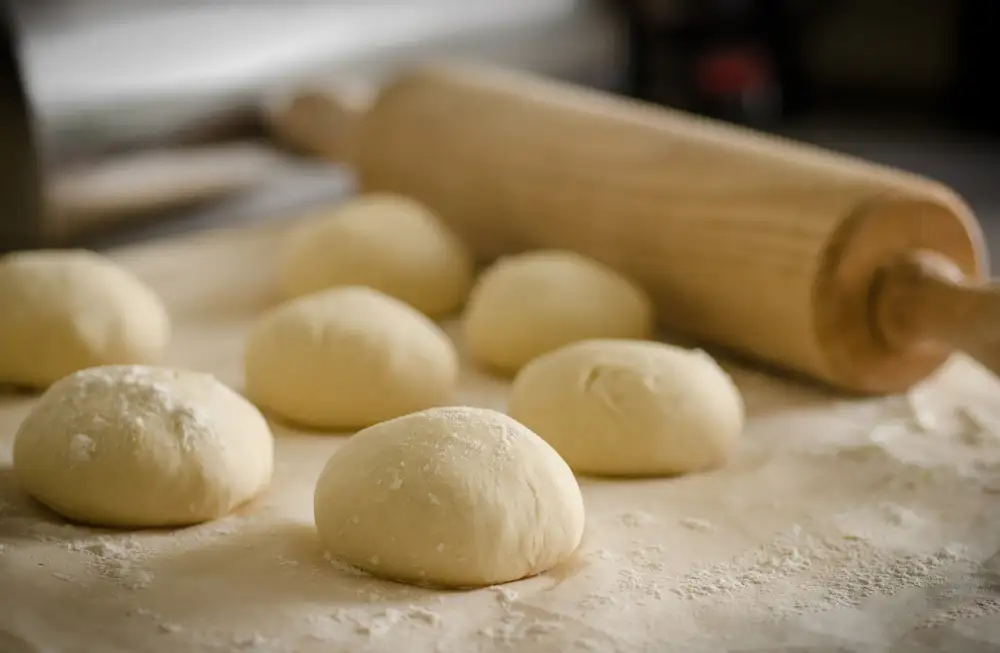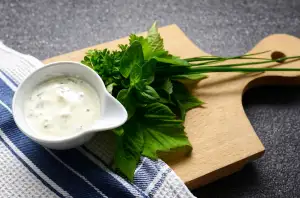Indulge in the Perfect British-Style Shortbread Recipe: A Taste of UK Delight!

British-style shortbread is a classic and beloved treat that has been enjoyed for centuries. With its rich buttery flavor and delicate crumbly texture, it is no wonder that this simple yet indulgent biscuit has become a staple in British baking. Whether enjoyed with a cup of tea or as a sweet treat on its own, shortbread is sure to delight your taste buds and transport you to the charming streets of the UK. In this article, we will take you through the process of creating the perfect batch of British-style shortbread, from selecting the finest ingredients to mastering the art of baking it to perfection. Get ready to embark on a culinary journey and discover the joy of homemade shortbread!
Ingredients required for making shortbread
To create the perfect British-style shortbread, you will need just a few simple ingredients. Here's what you'll need:
1. Butter: Use high-quality unsalted butter for the best flavor and texture.
2. Sugar: Granulated sugar is traditionally used in shortbread recipes.
3. Flour: All-purpose flour is the base of the shortbread dough.
4. Cornstarch: Adding cornstarch helps to create a tender and crumbly texture.
5. Salt: A pinch of salt enhances the overall flavor of the shortbread.
With these basic ingredients, you're ready to embark on your journey to making delicious homemade British-style shortbread!
Step-by-step instructions for preparing shortbread
1. Preheat your oven to 325°F (160°C) and line a baking tray with parchment paper.
2. In a mixing bowl, cream together 1 cup of unsalted butter and 1/2 cup of powdered sugar until light and fluffy.
3. Gradually add in 2 cups of all-purpose flour, mixing well after each addition.
4. Once the dough starts to come together, transfer it onto a lightly floured surface and knead it gently until smooth.
5. Roll out the dough to about 1/4 inch thickness and use cookie cutters to shape it into desired shapes.
6. Place the shaped dough onto the prepared baking tray, leaving some space between each piece.
7. Prick the surface of the shortbread with a fork to prevent it from puffing up during baking.
8. Bake in the preheated oven for approximately 20-25 minutes or until the edges turn golden brown.
9. Remove from the oven and let it cool on a wire rack before serving.
Enjoy your freshly baked British-style shortbread!
Tips and tricks for perfecting your shortbread
1. Use high-quality butter: The key to a rich and buttery shortbread lies in using good quality unsalted butter. Avoid margarine or low-fat substitutes as they can affect the texture and flavor.
2. Chill the dough: After mixing the ingredients, refrigerate the dough for at least 30 minutes before rolling it out. This will make it easier to handle and prevent spreading during baking.
3. Don't overmix: When combining the ingredients, mix until just combined. Overmixing can lead to a tough texture instead of a delicate crumbly one.
4. Use powdered sugar: Using powdered sugar instead of granulated sugar gives the shortbread a smoother texture. It also helps in achieving that melt-in-your-mouth consistency.
5. Score before baking: Before placing the shortbread in the oven, use a sharp knife or fork to score lines or create patterns on top. This not only adds visual appeal but also helps with even baking and easy slicing later on.
6. Bake at low temperature: Shortbread is traditionally baked at a low temperature (around 325°F/160°C) to ensure it cooks evenly without browning too much.
7. Cool completely before serving: Allow your shortbread to cool completely on a wire rack before serving or storing. This allows it to firm up and develop its characteristic crumbly texture.
By following these tips, you'll be well on your way to creating perfect British-style shortbread every time!
Variations and additions to enhance your shortbread
While traditional British-style shortbread is undeniably delicious on its own, there are several variations and additions you can try to take it to the next level. Here are a few ideas to inspire your creativity:
1. Chocolate Chip Shortbread: Add a handful of chocolate chips to the dough for a delightful twist. The melted chocolate will create pockets of gooey goodness in every bite.
2. Lemon Zest Shortbread: For a refreshing citrusy flavor, grate the zest of one lemon into the dough. This will add a subtle tanginess that pairs perfectly with the buttery richness of the shortbread.
3. Almond Shortbread: Incorporate some finely chopped almonds into the dough for a nutty crunch. You can also sprinkle sliced almonds on top before baking for an attractive presentation.
4. Lavender Infused Shortbread: Infuse your shortbread with dried lavender buds for a unique floral taste. Simply mix a tablespoon of crushed lavender buds into the dough before shaping and baking.
5. Jam-Filled Thumbprint Shortbread: Make an indentation in each cookie with your thumb and fill it with your favorite jam before baking. This adds a burst of fruity sweetness that complements the buttery base.
6. Cinnamon Sugar Coated Shortbread: Roll each piece of dough in a mixture of cinnamon and sugar before baking for an extra layer of flavor and irresistible crunch.
Remember, these variations are just starting points - feel free to experiment with different flavors, spices, or even incorporate other ingredients like nuts or dried fruits to create your own signature shortbread recipe!
Serving suggestions and storage recommendations
Once your homemade British-style shortbread is ready, it's time to savor its buttery goodness. Shortbread can be enjoyed in various ways, making it a versatile treat for any occasion.
For a classic presentation, serve the shortbread alongside a cup of hot tea or coffee. The rich flavors of the shortbread pair perfectly with the warm beverage, creating a delightful combination.
You can also get creative with your serving suggestions. Try crumbling the shortbread over ice cream or yogurt for an added crunch and sweetness. Alternatively, use it as a base for cheesecake or pie crusts to elevate your desserts to new heights.
When it comes to storing your shortbread, make sure to keep it in an airtight container at room temperature. This will help maintain its texture and prevent it from becoming stale. Shortbread can last up to two weeks when stored properly.
If you want to extend its shelf life even further, you can freeze the shortbread. Wrap individual pieces tightly in plastic wrap and place them in a freezer bag or container. Frozen shortbread can be enjoyed for up to three months by thawing it at room temperature before serving.
Remember, homemade shortbread is best enjoyed fresh, so try not to make more than you'll consume within a reasonable time frame. But if you do have leftovers, don't worry – they make excellent gifts or treats for unexpected guests!
In conclusion, serving suggestions and proper storage are essential for enjoying your homemade British-style shortbread to the fullest. So go ahead and indulge in this delightful treat that embodies the taste of UK delight!
Now that you have mastered the art of making British-style shortbread, it's time to indulge in the deliciousness of your creation. The buttery, crumbly texture combined with the subtle sweetness makes this treat irresistible.
Whether you enjoy it with a cup of tea or serve it as a dessert at your next gathering, your homemade shortbread is sure to impress. Don't forget to share the recipe with friends and family so they can experience the taste of UK delight too.
Remember, practice makes perfect when it comes to baking, so don't be discouraged if your first batch isn't exactly how you envisioned. With each attempt, you'll refine your technique and create an even more delectable shortbread.
So go ahead, grab a slice (or two) of your freshly baked shortbread and savor every bite. You deserve to treat yourself to this classic British delicacy. Happy baking!
Published: 12. 01. 2024
Category: Recipes



